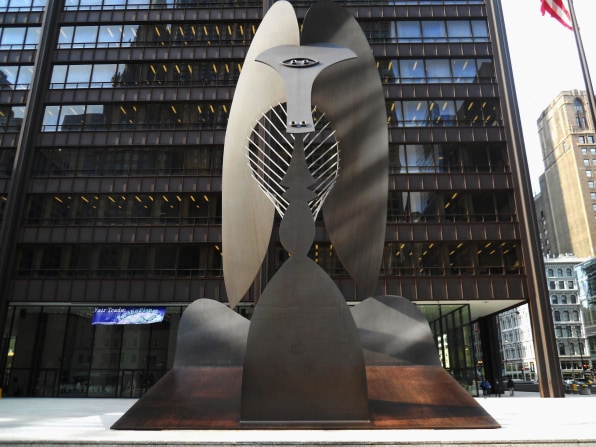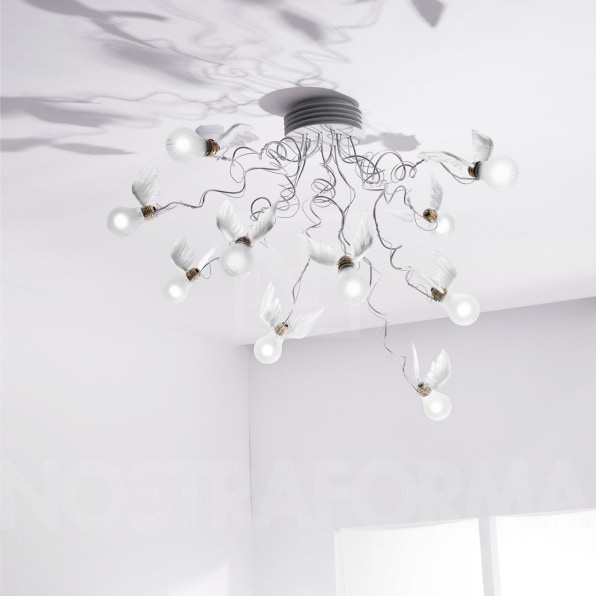Where to Work as a Graphic Designer
The iconic industrial designer Charles Eames once said; "design may be judged as art if it is good enough". Is it fair to suggest that done exceptionally well, there is no difference between the two, Art and Design?
Art: something that is created with imagination and skill and that is beautiful or that expresses important ideas or feelings.*
Design: the way something has been made; the way the parts of something (such as a building, machine, book, etc.) are formed and arranged for a particular use, effect, etc.**
I think a really amazing design is;
Something that is created with imagination and skill and that is beautiful or that expresses important ideas or feelings evident in the way something has been made; the way the parts of something are formed and arranged for a particular use or effect.
What uniquely distinguishes the difference between art and design? According to the definition of art above, one could easily argue that any industrial designer, architect, fashion designer, etc. adhering to best practice is creating art. So what is the key difference between art and design and what is the relationship between them? Is it intention? Is it commerce? When does art become design and design become art?
Perhaps the answer lies in an examination of constraints. If art is an endeavor completely free of constraints, what is a mural? Most murals have a size constraint and some may have other constraints such as subject matter or medium. Is this art? If murals are art, where does one draw the line between acceptable and unacceptable constraints to be considered art? Sometimes great sculpture is created within constraints. It may be intended for a specific plaza or grand hall. "The Chicago Picasso," as it is commonly called, is an untitled commissioned sculpture created specifically for Daley Plaza in the Loop. Is the Picasso art or do the constraints imposed on the artist not fit within the definition of what constitutes art? It seems that constraints do not clearly separate art from design.

Does duplication or production provide a clear distinction between art and design? Is a one-of-a-kind concept car art and the production version design? Both the concept car and the production vehicle are created with an intended consumer. There does seem to be general agreement that items created for a specific customer and for production are design and not art.
While a definitive differentiation that truly defines the difference between art and design may not exist, what is important is the relationship between the ideals of art and good design. Ideals such as a freedom from constraints, reflecting and interpreting culture, evoking emotions, provoking thought for change and embracing the future inspire both artist and designers allowing our imaginations to push the boundaries of what we know as possible. A great design should always be influenced by a desire to create art.
The Dutch firm Droog puts it succinctly "We believe that utility does not have to come at the expense of fantasy." Their work demonstrates a thirst for dreamy innovative solutions that redefine the practical. The Droog soft washbowl is a sink made of polyurethane that can be manipulated and reshaped for specific tasks or body types. It expresses both imagination and practicality while providing a vehicle for cultural change. The small sink promotes all kinds of new human-sink interaction and our view of small wash spaces.
A designer can find art anywhere if open to all of the possibilities. Ingo Maurer has taken his obsession with the simple beauty of the incandescent light bulb and has created light fixtures that celebrate the bulb by engaging fantasy. His work evokes powerful emotions for an often-ignored object, the light bulb. Maurer's Birdie chandelier is a work of design. Believing that incandescent bulbs represent flight, he imagines the bulbs as objects in flight, literally. Each bulb is given bird's wings. The bare bulbs seem both modern in their simplicity and antique in our memories. The attention that he brought to the bulb influenced a subsequent trend for incorporating the bare incandescent bulb as a focal point of the interior of hip bars and restaurants, then everywhere else. These kind of "haute couture designs" have great influence and many times define culture.

The character of Miranda Priestly, played by Meryl Streep in the film The Devil Wears Prada, explains how the art of fashion, such as haute couture, influences design as she dresses down Anne Hathaway's character who was laughing about an argument over the right color of Blue. "But what you don't know is that sweater is not just blue, it's not turquoise. It's not lapis. It's actually cerulean. And you're also blithely unaware of the fact that in 2002, Oscar de la Renta did a collection of cerulean gowns. And then I think it was Yves Saint Laurent… wasn't it who showed cerulean military jackets? I think we need a jacket here. And then cerulean quickly showed up in the collections of eight different designers. And then it, uh, filtered down through the department stores and then trickled on down into some tragic Casual Corner where you, no doubt, fished it out of some clearance bin. However, that blue represents millions of dollars and countless jobs and it's sort of comical how you think that you've made a choice that exempts you from the fashion industry when, in fact, you're wearing a sweater that was selected for you by the people in this room from a pile of stuff." Interestingly, this sequence also serves to point out one of the problems that faces designers interested in creating art as issues of mass production and low cost get in the way of retaining the art in imaginative and innovative solutions.
Artistic inspiration cannot be separated from the object no matter how removed from the original influence.
The affect a work of design can have on culture is huge and great design has always been inspired and influenced by art. Today, infusing art into design is becoming more a necessity, as it's a way to exceed user expectations and touch emotions. Art and Design can be the same thing. It is a challenge that all IDs should embrace. Today those designers not inspired by art and the ideals of the artist risk failure tomorrow.
Mark Dziersk
* from Webster
** from Webster
Mr. Dziersk is a Managing Director of Lunar, an Internationally recognized Industrial Design agency with five offices serving clients around the world. Mark also heads LUNAR's Chicago office. Widely considered one of the top Industrial Design organizations in the world, Lunar was a finalist for the prestigious Cooper Hewitt National Design Award in 2012.
Mark's experience includes a 20+ year career in Industrial Design, Brand Design and consumer packaged goods markets. He's served as a juror for the last International Housewares awards, teaches in the classroom as an adjunct at Northwestern University, and edits Innovation Magazine. In addition, he is a past President of the Industrial Designers Society of America and is currently an expert blogger on the topic of Design in business for Fast Company magazine.
Where to Work as a Graphic Designer
Source: https://www.fastcompany.com/3029279/a-work-of-design
0 Response to "Where to Work as a Graphic Designer"
Post a Comment